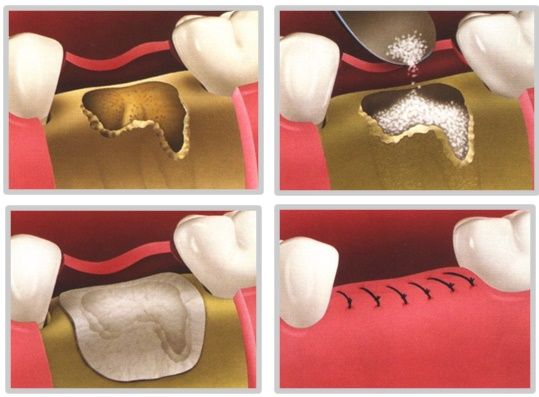
If the bone where it is decided to place the implant does not have the minimum height or thickness required, a bone graft is placed.
There can be many reasons why the jawbone or mandible does not have sufficient bone mass.
Causes of bone loss
- parodontosis - damage to the tissues supporting the teeth on the arches (periodontal tissues) leads over time to resorption of the bone
- loss of natural teeth - the loss of natural teeth and their non-replacement by prosthetic means or dental implants, causes over time the reduction of bone tissue
- occlusal trauma - contacts between the upper and lower teeth at the bite can develop excessive forces that put pressure on the supporting tissues of the teeth, and thus on the bone; over time, these imperfect contacts cause loss of bone tissue
- congenital factors - there are people who are born with reduced bone mass
The procedure of placing a bone graft is usually performed during dental implant surgery or as a stand-alone operation.
After removing the gum and exposing the bone, the bone graft is inserted and sometimes if the remaining bone volume is sufficient, we can also insert the dental implant. The bone graft is then covered with a special membrane that will hold it in place.
Finally, the gum is repositioned and sutured. It is essential that there is no pressure from prosthetic work to mobilise the graft during the healing period.
 RO
RO  EN
EN 